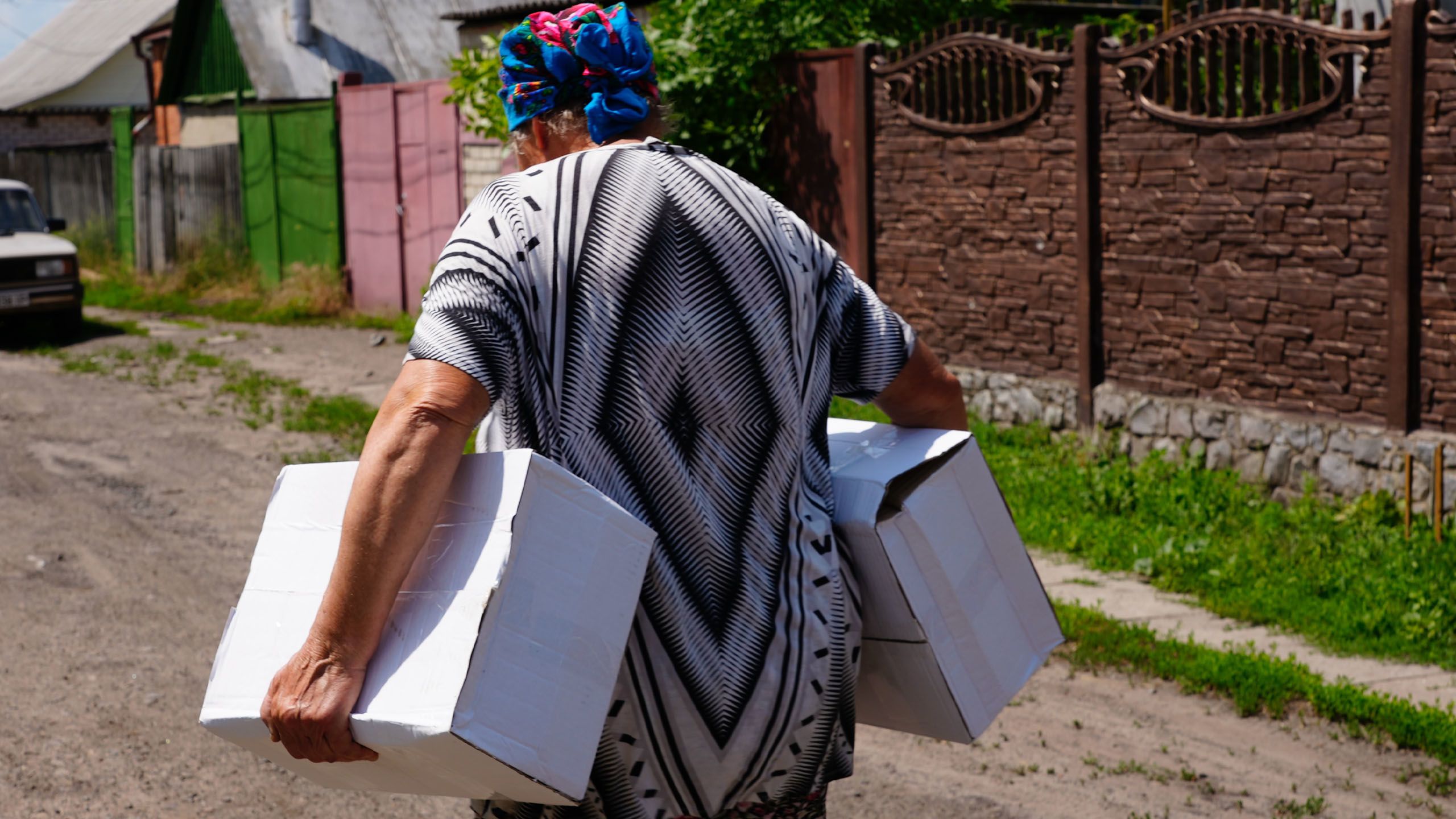Ukraine farmers on the front lines of a war fueling a global food crisis

CHERNIHIV REGION, Ukraine — A few miles from the Russian front line just outside the town of Kramatorsk in eastern Ukraine, Oleg Simonenko isn’t sure how he’ll get through the coming weeks.
The 55-year-old and his son converted their 400-hectare (990-acre) grain farm into a base for Ukraine’s Territorial Defense Forces — civilians turned fighters. The pair man checkpoints by day and farming by evening.
Simonenko was fortunate to sell his wheat before Russia’s Feb. 24 invasion and plant again this year, but he worries he’ll have nowhere to store the grain if his country’s ports remain blocked.
He also worries that Russian forces could target his fields and burn the crops once they are ready for harvest, as they’ve already blown the roof off of several communal storage buildings near his farm.
"Right now they're targeting more the railways and the places where military vehicles and people are gathered," he said. But he is also worried that Russian forces will target fields more as the grains grow.
The war in Ukraine has created an unprecedented global food crisis, with farmers unable to cultivate their grains or move them out of the country — and hunger also growing domestically.
Before the invasion, Ukraine was the world’s fifth-largest wheat exporter, feeding some 400 million people. But according to the United Nations, Russia has blockaded the country’s ports on the Black Sea — the main export routes — and the area is also heavily mined.
The consequences are far-reaching and could push an additional 47 million people — on top of some 276 million — into acute hunger, the World Food Programme said, with countries such as Somalia, Ethiopia, Yemen, and Egypt at greatest risk.
“If we can't find solutions to the Ukraine export crisis, then that's a staggering 17% jump in acute food insecurity. … I can't think of a war in my 21 years with the World Food Programme with the U.N. that has had this level of potential global impact,” said Matthew Hollingworth, emergency coordinator for WFP in Ukraine.
According to Hollingworth, Ukraine exported 51 million tons of grains last year, but now about 20 million tons sit in storage, unable to leave the country. The international community and Ukrainians are scrambling to find ways to get the grains out, but so far negotiations for safe passage from Black Sea ports have not yielded results.
Ursula von der Leyen, president of the European Commission, accused Russia of weaponizing food and using “hunger and grain to wield power,” during the World Economic Forum in May. U.S. Secretary of State Antony Blinken made similar accusations last month, saying Russia was holding “hostage” supplies for millions of people in Ukraine and around the world.
Not only has Russia blocked food from getting out, but it has occupied or destroyed some 30% of Ukraine’s grain-producing capability and attacked storage facilities, according to Ambassador Jim O’Brien, the head of the Office of Sanctions Coordination for the United States, who spoke to reporters on a press call in June.
Ukraine has also accused Russia of stealing grain and selling it to Syria.
As talks between Turkey, Russia, Ukraine, and the U.N. to open the ports are scheduled in the coming weeks, grain is being sent overland by rail and road through Europe, but only a fraction of the usual 5 million metric tons a month is able to get through, according to Hollingworth. In May, just 1.5 million metric tons left the country by “maxing out all of the routes,” he said.
One problem is that the size of European train gauges are different, so wagons leaving Ukraine need to change gauge to fit rails in neighboring countries and there are few wagons available, he said.
An uncertain future

Driving past vast swaths of land in the Chernihiv region in northern Ukraine, Ivan Kriuchkov laughs bitterly as he points to the once-lush expanse that now lies almost bare.
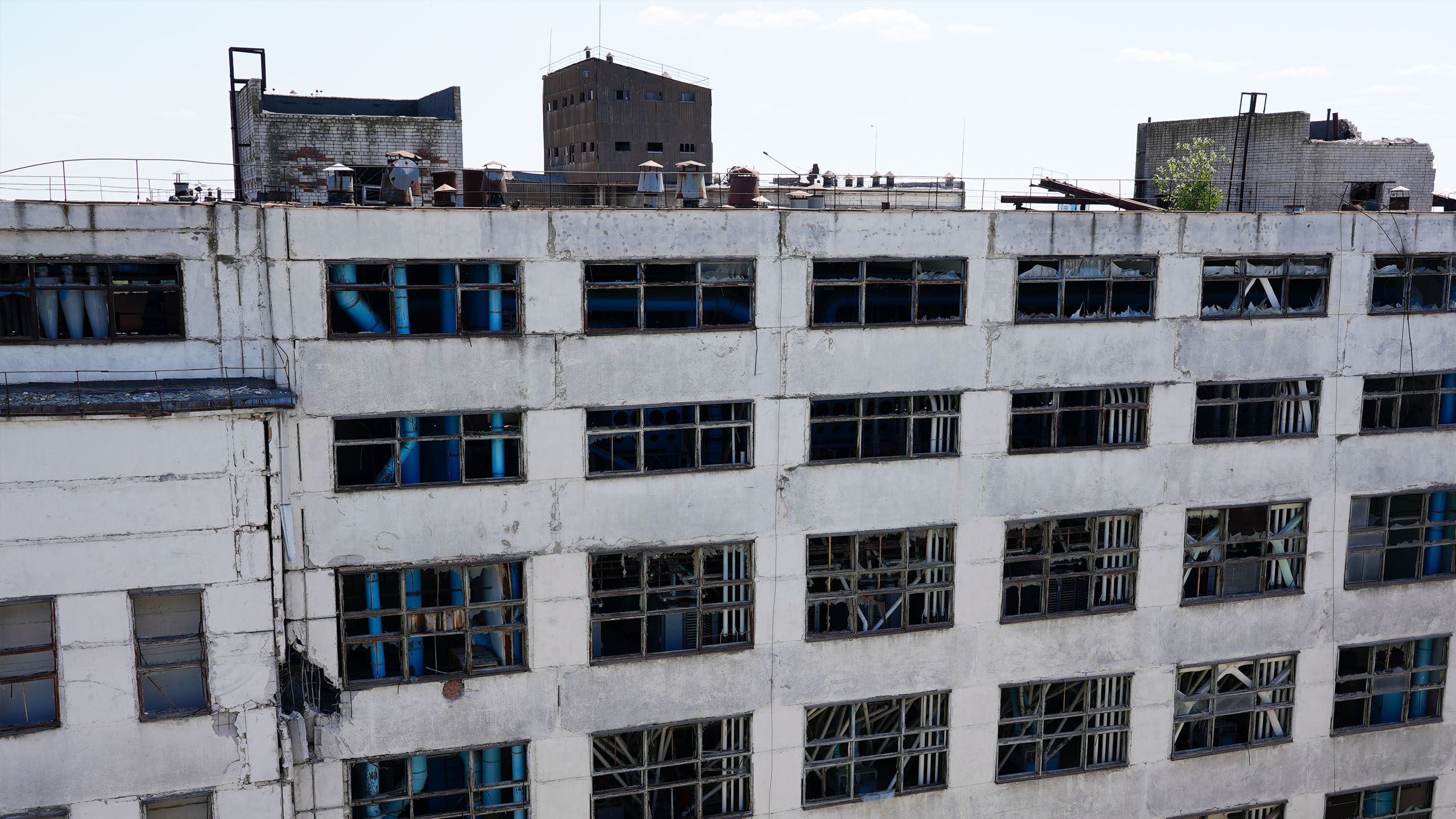
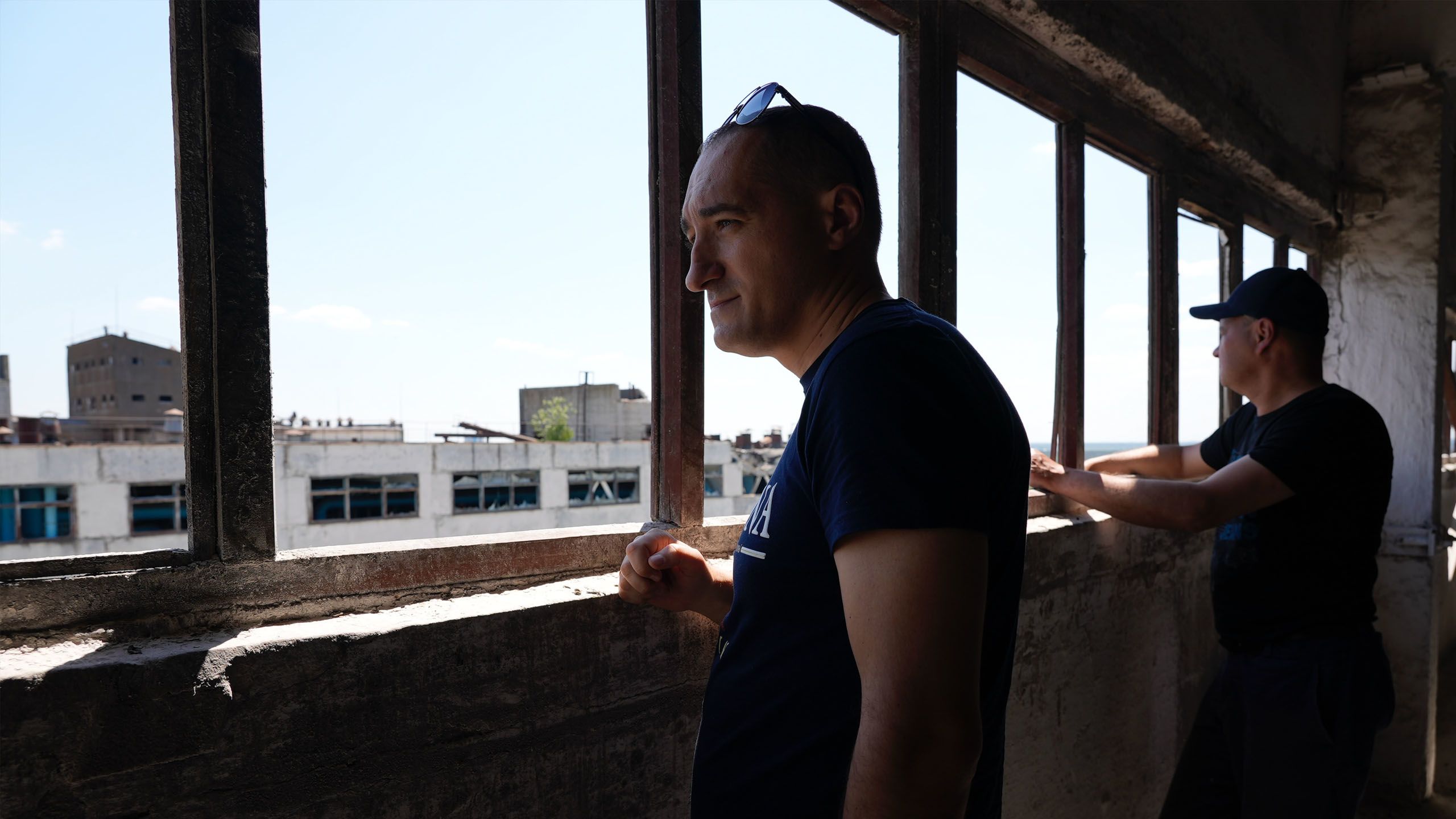


A damaged building near Kriuchkov's farm in the Chernihiv region. It was impacted by missiles that hit close to the farm.
A damaged building near Kriuchkov's farm in the Chernihiv region. It was impacted by missiles that hit close to the farm.

Kriuchkov stares out from the top floor of the grain storage building.
Kriuchkov stares out from the top floor of the grain storage building.

Farmland in the Chernihiv region, viewed from the top floor of Kriuchkov's storage elevator.
Farmland in the Chernihiv region, viewed from the top floor of Kriuchkov's storage elevator.
“They’re nice fields, but they look better when they grow things,” said the 38-year-old grain and dairy farmer.
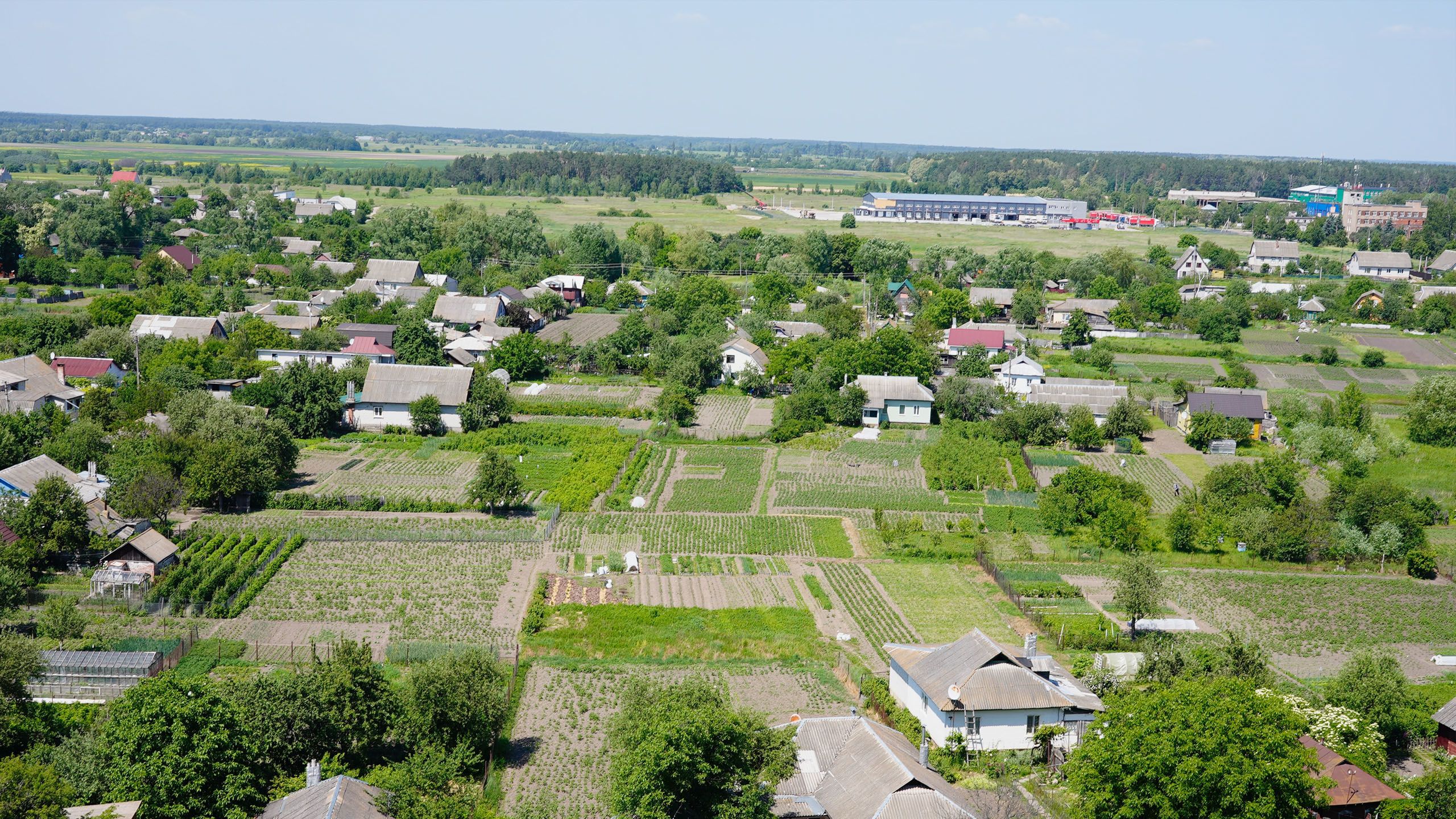
During the month and a half that Russian troops occupied the area — preventing Kriuchkov and his team from planting the 200,000 metric tons of wheat, sunflower seeds, and corn they usually do each year and tending to his herd of dairy cattle — the soldiers destroyed the land, leaving behind machinery, dug-out trenches, and farms dotted with mines, he said.
Even though the Russians evacuated the area in April, right before planting season, it took six weeks to clean it up, making it impossible to sow, Kriuchkov said.
The little winter wheat they were able to plant before the war needs to be harvested in July, but his storage elevator is already full with 60,000 metric tons of corn he hasn’t been able to get rid of.
Milk production also slumped to 4 metric tons a day from 15 due to illnesses that befell the cows during the invasion.

It’ll take the cows at least a year to recover their milk-producing health, he said, adding that his farm has taken a huge financial loss, potentially in the millions of dollars, and while he’s been able to keep most of his 400 employees on salary, he’s not sure how long that will last.

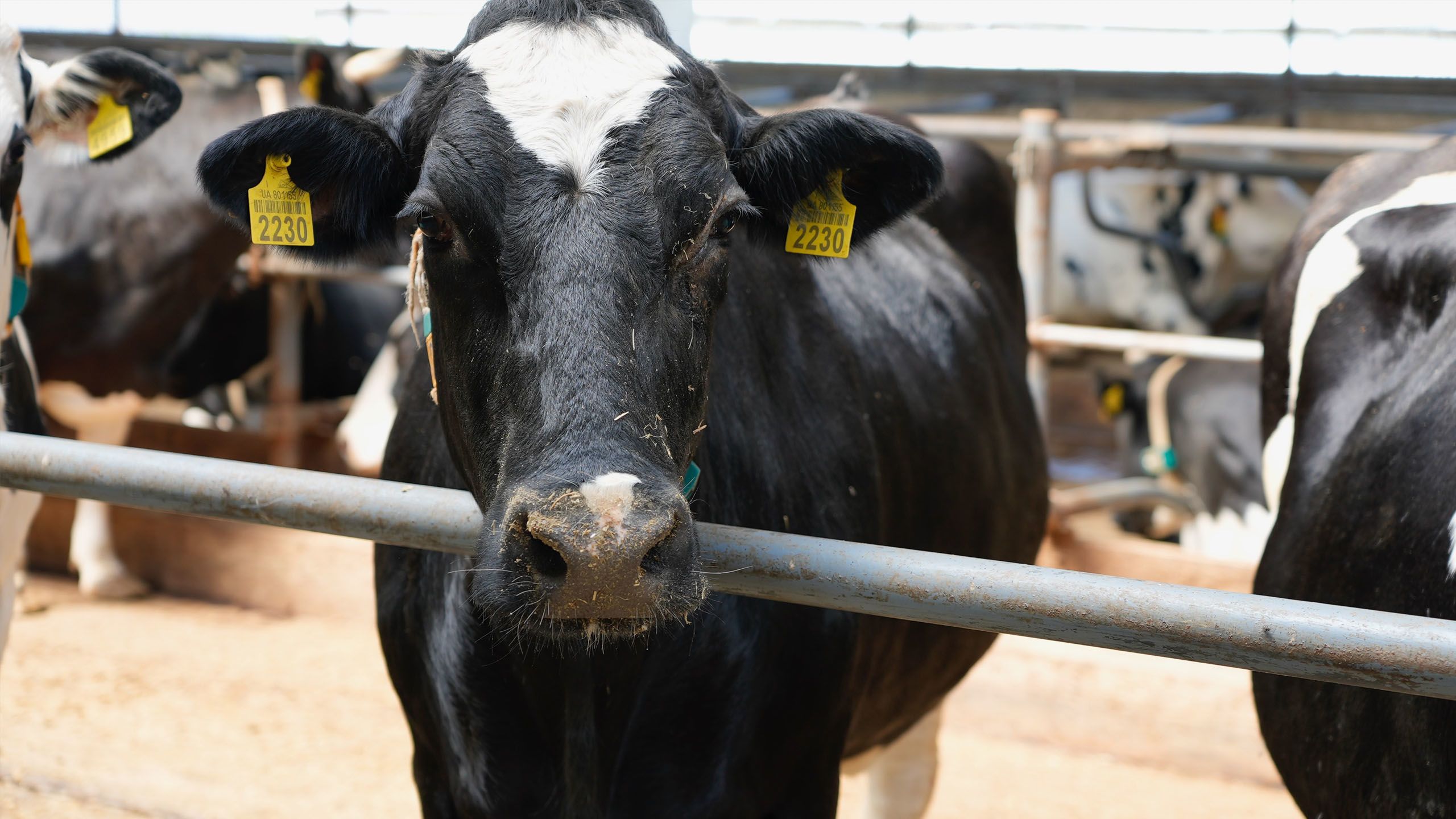




“We used to have plans,” he said.
“We used to have contracts for transporting crops signed six months in advance, but now we don't know anything and anything can happen.”
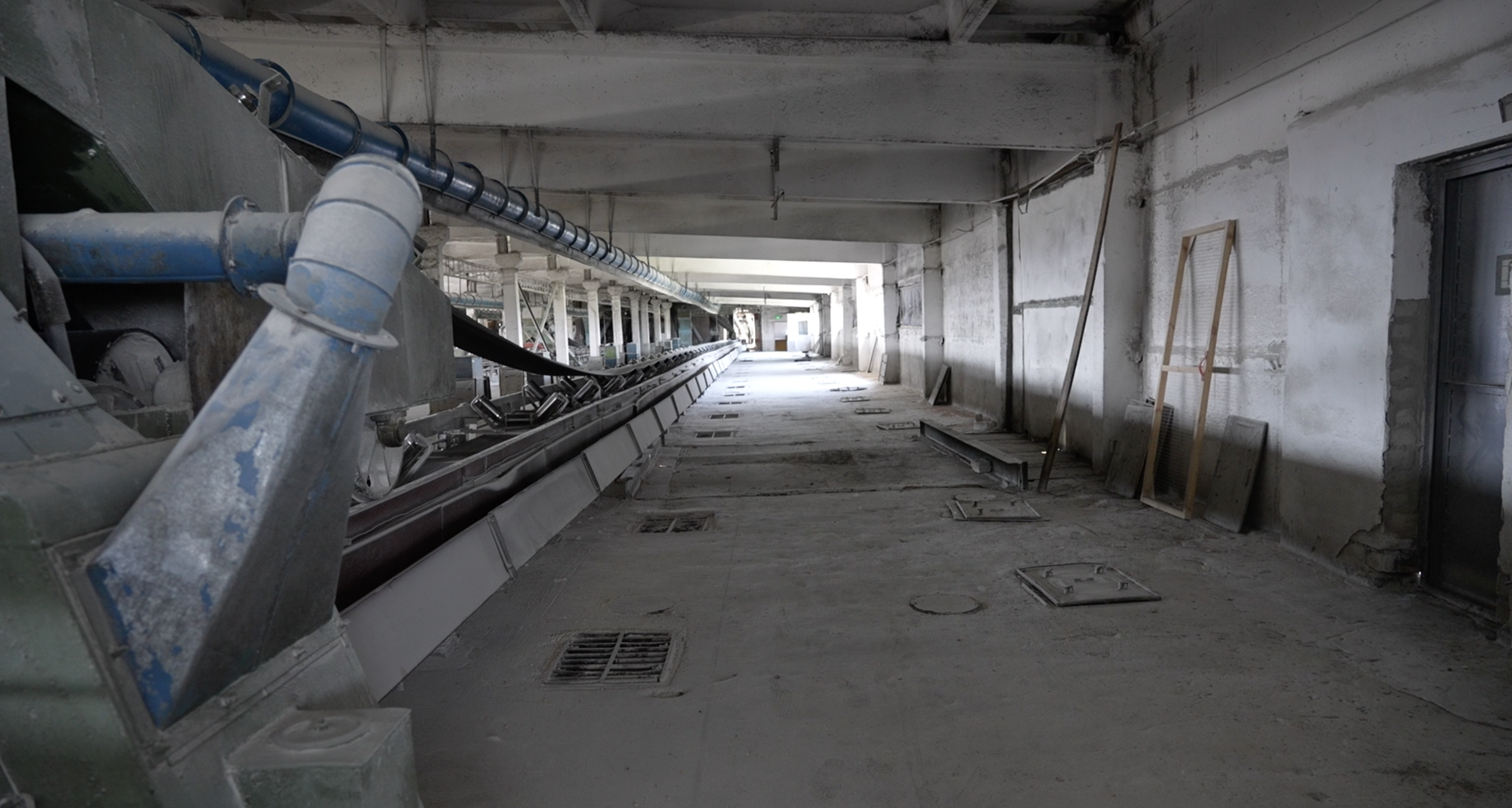
“If they bomb the railway or the bridge we won't be able to transport crops.
“Now we have plans for one to two weeks, tops.”

About 900 kilometers (560 miles) east, Simonenko is also struggling to make ends meet.
He has given the Ukrainian military thousands of dollars for weapons and diesel, and now he doesn’t have enough funds to fuel his harvester and tractors to harvest the winter wheat in July.
A tractor at Kriuchkov's milk farm.
A tractor at Kriuchkov's milk farm.
“If we don't fuel our harvester then the grain will fall. In three weeks we won't be able to harvest the crops at all,” he said.
He wants to borrow some $10,000 from his neighbors to tide him over.
Searching for solutions

The international community is doing what it can to help farmers like Kriuchkov and Simonenko deal with the consequences of the war and the blockade.
Earlier this month, the United States signed a three-year agriculture partnership with Ukraine to address global food insecurity and focus on providing technical assistance to the country, helping rebuild its agriculture industry when the war ends.
The U.S. is also expanding its Feed the Future program, which supports global research in international agriculture, said Cary Fowler, the country’s special envoy for global food security, during a phone call with the media in June.
It’s working with European partners to build temporary silos on Ukraine’s borders and aiming to address the rail gauges issue by using trucks to transfer grain, U.S. President Joe Biden said in a speech earlier this month.
But analysts said this food crisis would force countries to look to the long term and assess where and how they acquire their imports.
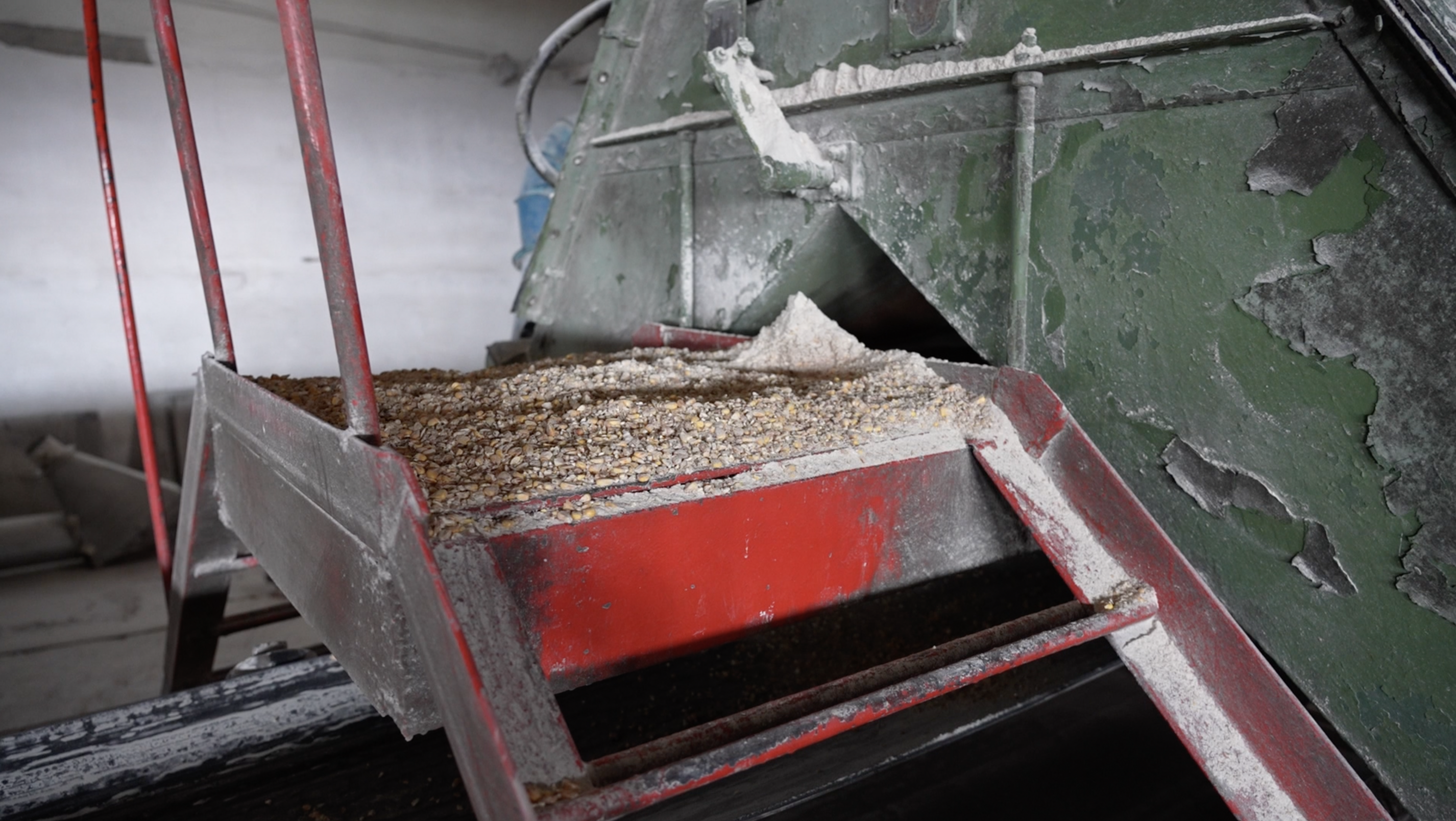
“The reliability of Russian and Ukrainian wheat supplies will certainly cause importers to think about alternative sources, and incentivize farmers and governments to invest,” said Ian Mitchell, a co-director and senior policy fellow at the Center for Global Development.
In addition to being the world’s largest exporter of wheat, Russia is also the top exporter of fertilizer, providing $7.6 billion worth in 2020.
Until a solution is found though, humanitarian donors and the Group of Seven leading industrial nations, or G-7, need to tackle both the export and food crises by providing assistance for low-income countries in addition to Ukraine, Mitchell said.
Nations in the larger Group of 20, or G-20, also need to keep markets and trade open in the Black Sea and their own countries, he said.
‘We don't have anything’

As world leaders work on getting grains out of Ukraine to combat the global food crisis, hunger is also growing inside of Ukraine, particularly near the front lines where people don’t have easy access to food.
About 10.2 million people across Ukraine are in need of food and livelihood assistance.

Residents in several northern and eastern front-line towns told Devex in June they had no electricity or gas and found it hard to buy food.
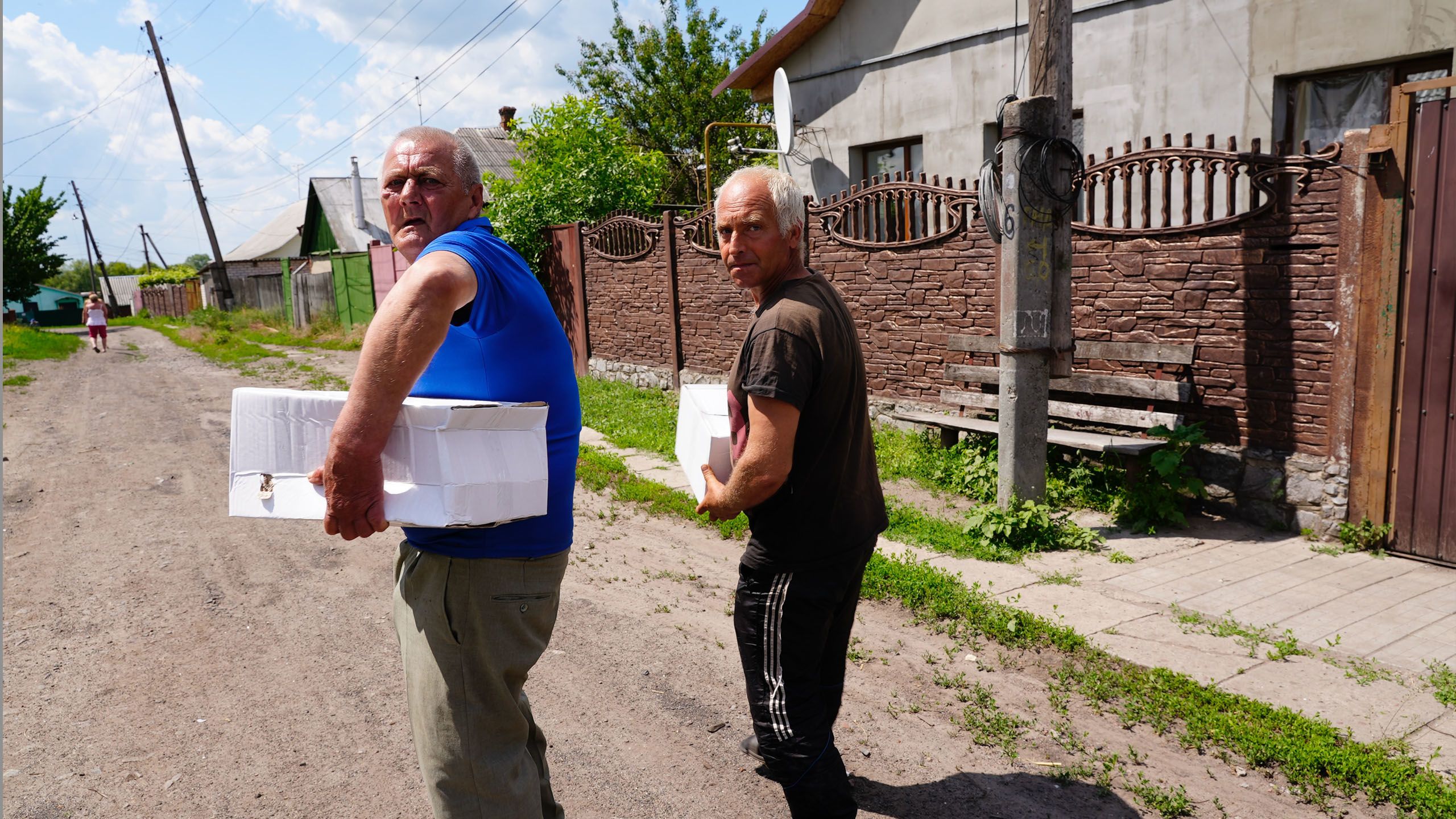
Stores were closed or damaged, or they had little stock. And if there was food available, people often could not access money to pay for it, as there was no electricity for using bank cards or ATMs.
“Volunteers come here a couple of times per week … you see how many people come here to get food. There's a huge line,” said Olga, a town resident who only wanted to use her first name.
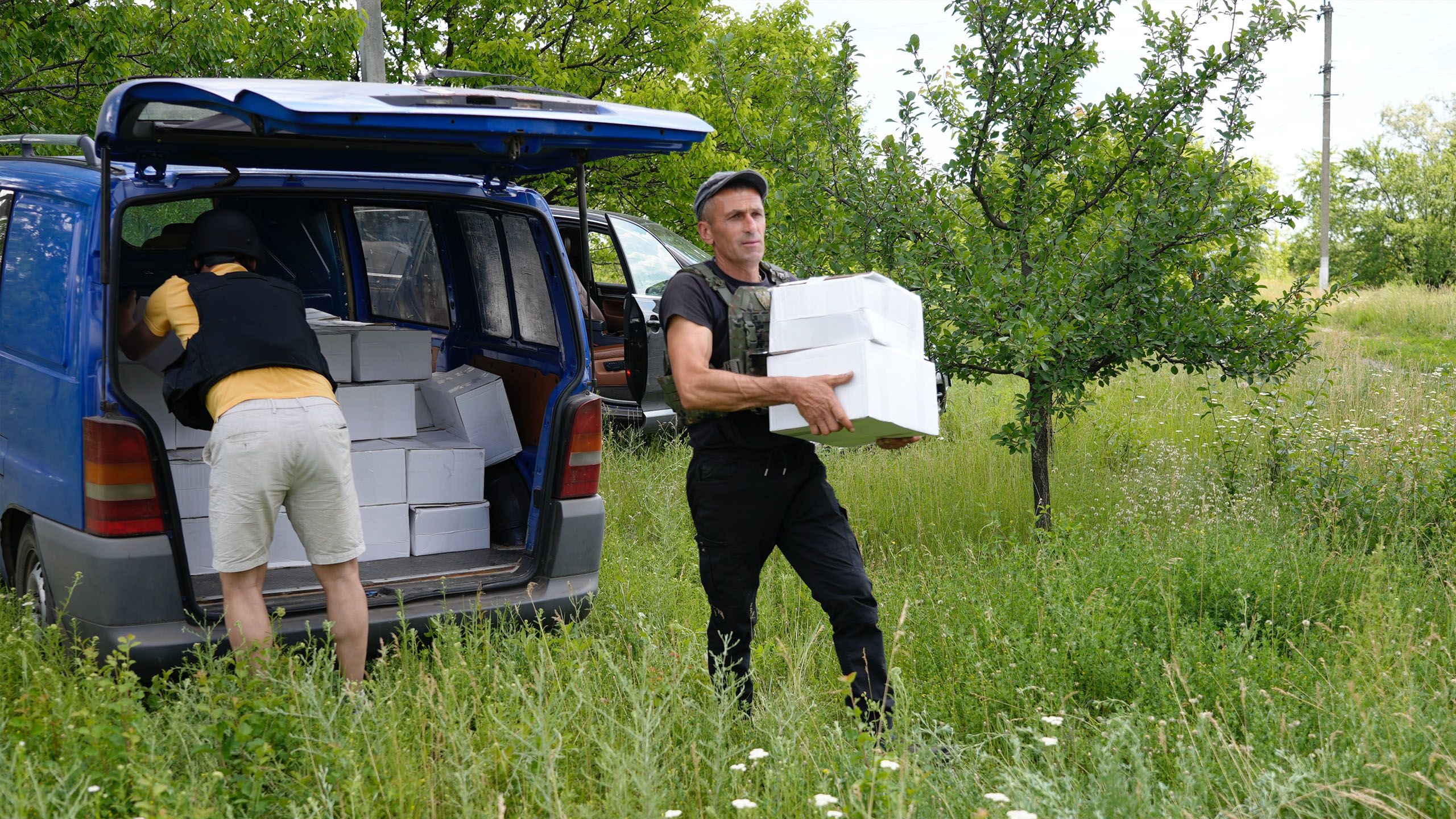
A volunteer carries a box of food to a front-line town outside the northern city of Kharkiv.
A volunteer carries a box of food to a front-line town outside the northern city of Kharkiv.
Water is also scarce, so people filled bathtubs to store it or lined up under relentless shelling at the one water pump in town to fill jerrycans.
Vadim Khraptovich, a co-founder of local aid group Yangoly Spasinnya, or Angels of Salvation, has been bringing assistance to villages in the east since February and said people are becoming more desperate and supplies are dwindling.
“The situation is getting worse. When the war started, some European countries and organizations brought humanitarian aid here. But now they might be tired of this war,” Khraptovich said.
“We don’t have anything. Stores are empty. Logistics are broken.”
Vadim Khraptovich, co-founder of Yangoly Spasinnya, or Angels of Salvation, distributes aid in a front-line town in the Donbas region in the east.
Vadim Khraptovich, co-founder of Yangoly Spasinnya, or Angels of Salvation, distributes aid in a front-line town in the Donbas region in the east.
But despite the bleak outlook, farmers maintain that they won’t be deterred from trying to produce.
“We need to gather and do the work,” Simonenko said. “I don't know if I will succeed, but it's better to do something and show people an example than just talk.”
